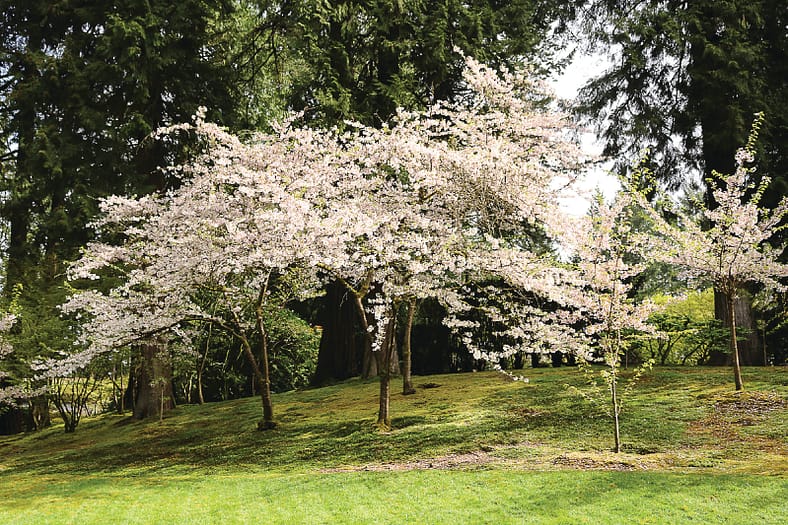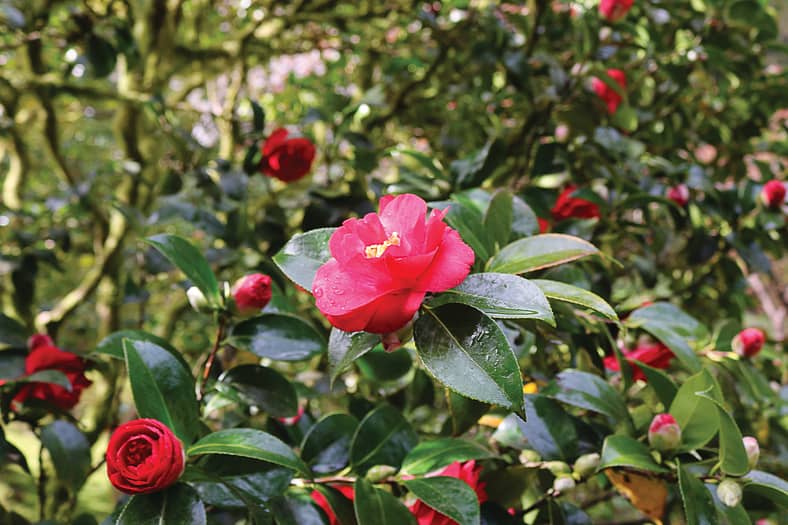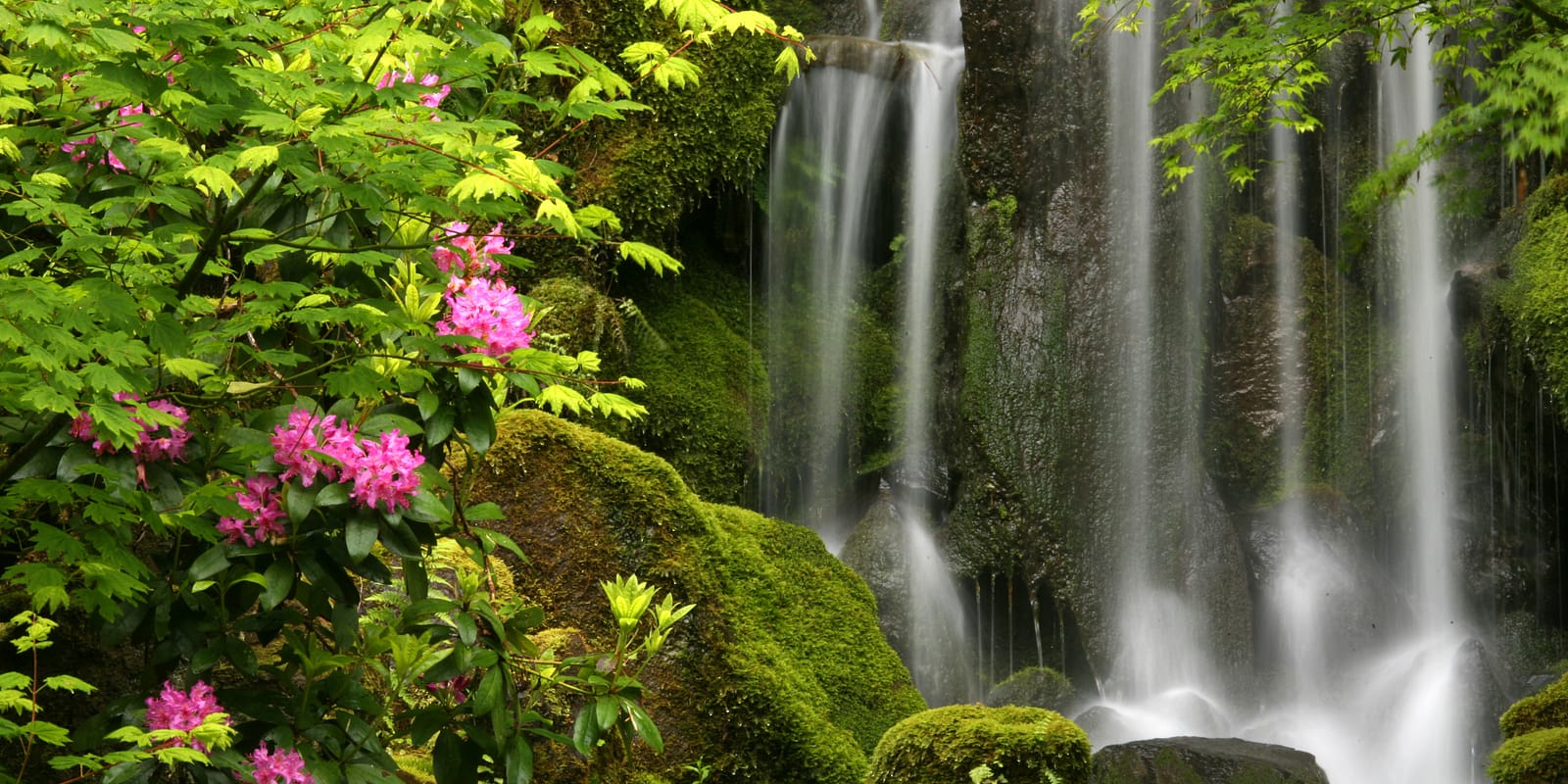“Where is all the color?” ask many first-time visitors to a Japanese garden. Color and number of plant specimens are not necessarily what a Japanese garden is about, but the differences in color and contrast are part of what make them intriguing.
The subtlety of different shades and textures of green are thought to promote the tranquility and harmony sought by a Japanese garden designer, while flowers are treasured by the Japanese and the seasonal blooming of trees and shrubs is highly celebrated.
Sakura: a Fleeting Beauty
The cherry blossom is the national flower of Japan and many resonate with sakura, or cherry blossoms. The Yoshino Cherry is a hybrid cherry and is one of the most popular and widely planted cultivated flowering cherries worldwide. Because Japan is known as the “Land of Cherry Blossoms,” the flowers represent the Japanese people and notably the samurai.

At Portland Japanese Garden, Yoshino Cherry Trees line the top of the hillside across from Heavenly Falls; called Cherry Hill. These buds typically bloom in late March or early April.
Portland Japanese Garden’s Weeping Cherry represents spring in the Flat Garden and is an elegant, deciduous tree growing up to 30 feet tall. It’s famous for its pendulant branches covered with bright pink and white flowers in the spring. Our Weeping Cherry tree is thought to be about 75 years old and is found in the southeast corner of the Flat Garden.

Beginning to Blossom
Famous for their elegant beauty, camellias are evergreen broad-leaf shrubs that can reach heights of six to 12 feet tall. They are one of the first to bloom in the Garden at the end of winter and early spring.

After you pass the Sapporo Lantern in the Strolling Pond Garden and walk toward the Moon Bridge, you will enter the Camellia Tunnel.
Look for pieris in bloom near the Upper Pond in the Strolling Pond Garden and in the Natural Garden. Pieris is an ornamental beauty with simple leaves.

In early spring, bright red growth appears first followed by chains of small, delicate white flowers.

Soon, we will see Dogwoods flowering throughout the Flat Garden. The Dogwood is a small deciduous tree able to grow up to 33 ft high. When blooming in May, this tree features four white petals with a central flower cluster.
Springtime Showstoppers
Azaleas are a springtime showstopper at Portland Japanese Garden. Azaleas can be found throughout the Garden, including in the Natural Garden and the hillside on the far side of the Upper Pond. These flowers last for several weeks and prefer shaded areas.

Rhododendrons are referred to as “the king of shrubs.” Rhododendrons are an evergreen shrub featuring rounded clusters of pink, purple, or white flowers in the spring with hearty, dark green leaves. Rhododendrons have ten or more stems within the flower, while Azaleas have five. These shrubs can reach eight feet in height and are located throughout Portland Japanese Garden, including near the Antique Gate and outside the Flat Garden.

Harbinger of Summer
As the last plant to bloom in the Garden, the Japanese iris is a native Japanese plant and the harbinger of summer. The buds open in late June to reveal flowers nearly six inches across in shades of purple and white. Symbolizing purity and innocence, the narrow iris leaf resembles the shape of a samuri sword blade. The Japanese iris beds can be found in the Lower Pond by Heavenly Falls in the Strolling Pond Garden. They are the Higo form of Japanese iris bred to bloom a single flower on a single stem.

In a Japanese garden, a glimpse of spring is designed to help you tolerate winter. By the same token, we appreciate spring because of winter.
